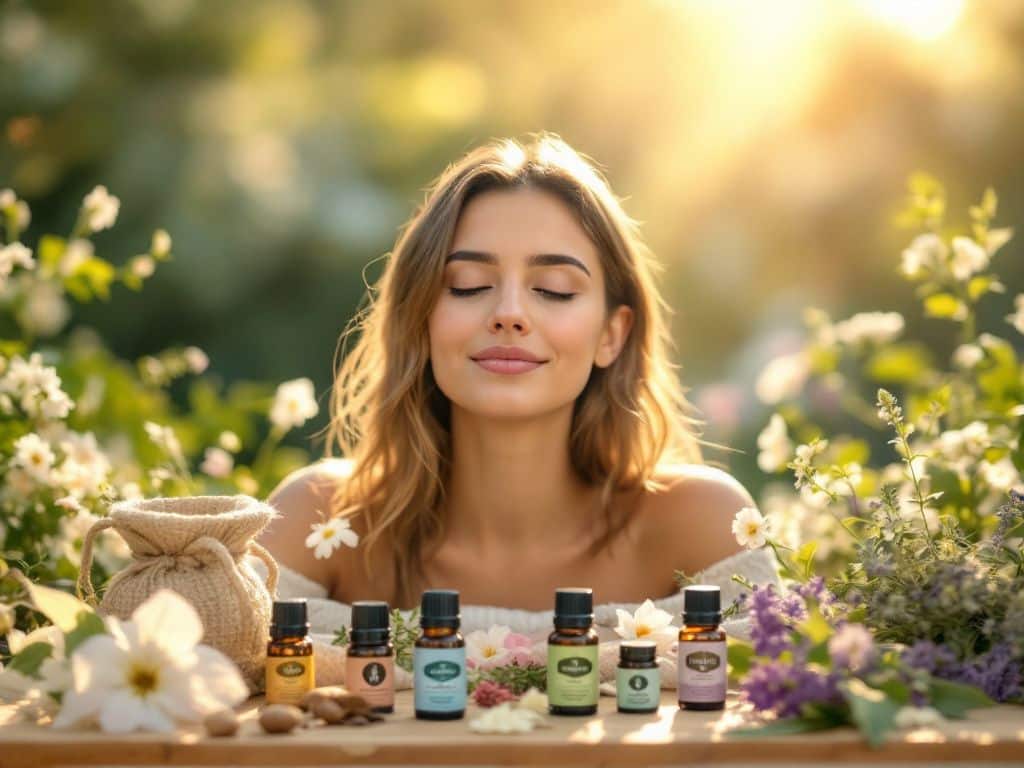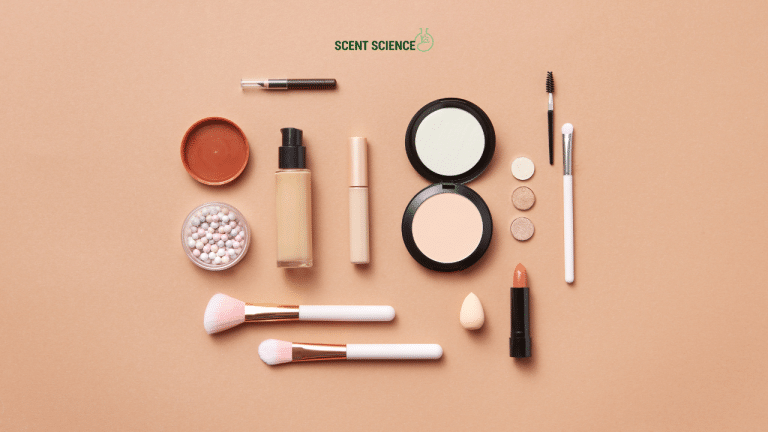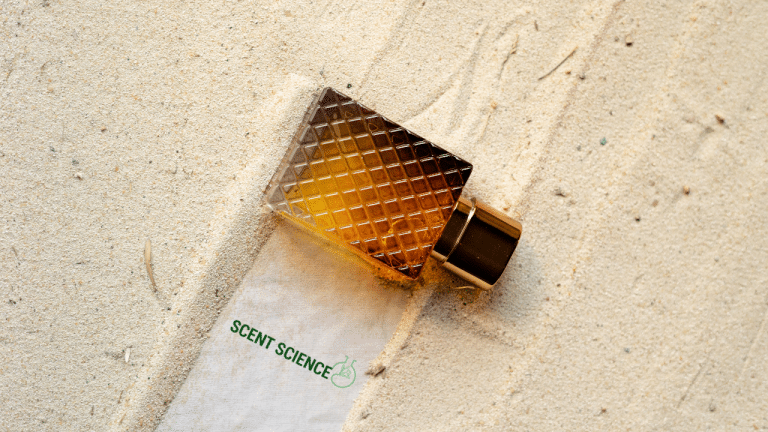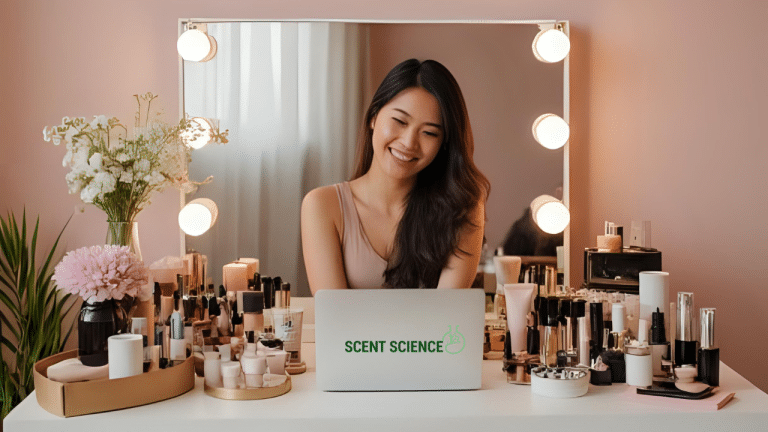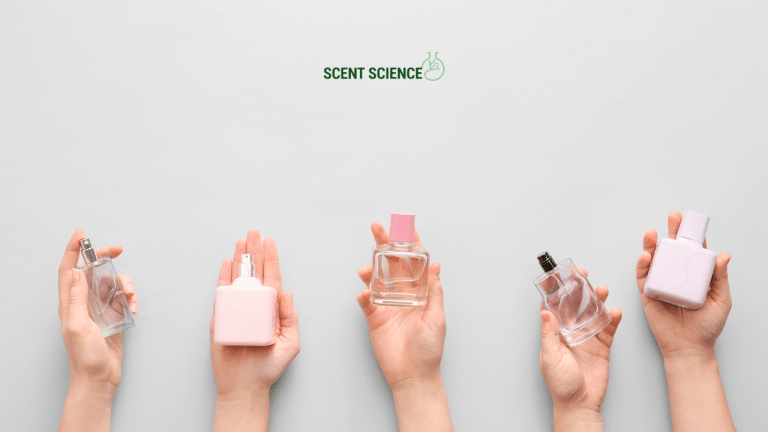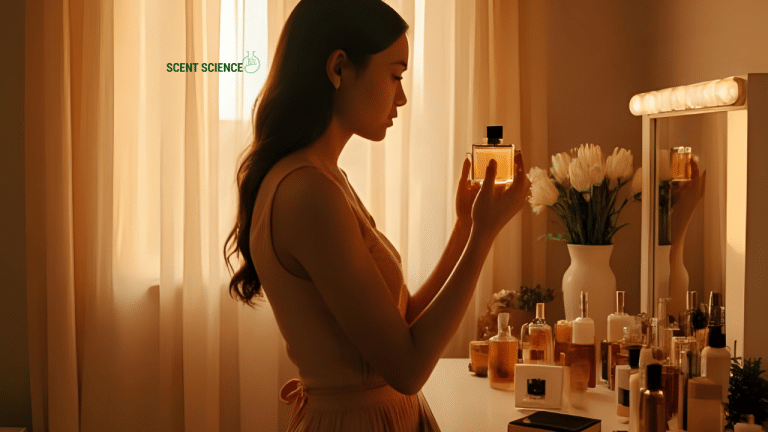In an ever-evolving world where anxiety and stress are pervasive, the quest for simple yet effective solutions to calm the mind is more critical than ever. Enter the realm of calming scents for anxiety—a space where traditional aromatherapy meets modern innovation to uncover fragrances with true stress-relieving power. As we approach 2025, not only are classic scents undergoing scrutiny, but new and undiscovered anti-anxiety fragrances with potential viral appeal are emerging on the scene. Let’s dive into the top 10 scents that have garnered attention for their potential to stabilize our mental equilibrium and bring much-needed peace.
Table of Contents
ToggleLavender: The Timeless Anxiety Reliever
Lavender has been a frontrunner in stress relief scents due to its potent relaxing properties. Known primarily for its ability to improve sleep quality, lavender has demonstrated in multiple studies its efficacy in reducing anxiety levels.
Research & Evidence
A study published in the *International Journal of Psychiatry* found that lavender oil (specifically Silexan) significantly reduced general anxiety in patients when administered over six weeks. This anti-anxiety fragrance works by interacting with the brain’s neurotransmitters, thus balancing mood and promoting relaxation.
Practical Tips
- Diffusion: Use a diffuser in your bedroom to help improve sleep quality.
- Topical Application: Dilute and apply a few drops on pulse points to experience calming effects throughout the day.
🌿 **Expert Insight:** Combining lavender with bergamot may enhance its anxiolytic effects, creating a bespoke blend for personal use.
Bergamot: The Citrus-Calm Solution
Bergamot, derived from the peel of the bergamot orange, offers a unique balance of invigorating citrus and soothing floral notes, making it one of the most effective stress relief scents.
Technical Breakdown
A randomized controlled trial documented in the *Journal of Phytotherapy Research* evaluated bergamot essential oil’s influence on mood. The results were promising—participants experienced reduced cortisol levels and marked improvements in mood and relaxation after just ten minutes of inhalation.
Real-world Application
- Aromatherapy Bath: Add a few drops to your bath for a refreshing yet calming experience.
- On-the-go Relief: Carry a pocket-sized roller blend for instant calm when overwhelmed.
🍊 **Pro Tip:** Use bergamot with lavender for an afternoon pick-me-up that’s both energizing and soothing.

Valerian: The Underrated Tranquilizer
Though less known than others, valerian root has demonstrated remarkable potential as a stress-relief scent. This herb, often associated with sedative qualities, reduces both psychological and physiological symptoms of anxiety.
Case Study Analysis
An exploration published in the *BMC Complementary Medicine and Therapies* journal demonstrated that valerian extract significantly reduced anxiety scores in rats, paving the way for human-based studies which are currently underway.
Best Practices
- Relaxation Sachets: Combine dried valerian root with chamomile petals for a DIY calming sachet.
- Night-time Rituals: Place a few drops of valerian oil on your pillow for a good night’s sleep.
🌙 **Insider Tip:** Valerian’s calming effects can be enhanced when combined with hops or passiflora in a tea or inhalation blend.
Chamomile: The Gentle Calmer
Famous for its use in teas, chamomile extends its reach into the realm of aromatherapy with proven calming effects.
Scientific Findings
Chamomile’s potential was evaluated in a placebo-controlled study conducted by the *National Center for Complementary and Integrative Health*. It provided compelling evidence that chamomile essential oil application leads to beneficial effects on generalized anxiety disorder.
Effective Uses
- Essential Oil Burner: Perfect for use during meditation or yoga to maintain a calm mind.
- Soothing Creams: Incorporate into skincare for enhanced anti-stress benefits.
🌼 **Usage Note:** Chamomile pairs well with lavender for supreme relaxation.
Rose: The Heart-opening Fragrance
Rose oil is celebrated not just as a stress relief scent but an enhancer of emotional well-being and harmony.
Data-Driven Insight
A survey led by the *University of Vienna* concluded that participants who inhaled rose oil reported an improvement in mood and a notable reduction in stress markers such as heart rate and blood pressure.
Application Suggestions

- Mindful Breathing: Utilize in breath-focused practices to deepen emotional connection and reduce stress.
- Emotional First Aid Spray: Create a calming room spray combining rose oil with witch hazel.
🌹 **Advanced Advice:** Rose oil combined with sandalwood offers a balancing scent perfect for emotional equilibrium.
Sandalwood: The Centering Elixir
A favorite for meditation and spiritual practice, sandalwood remains a powerful agent for calming the mind.
Research Insight
Scientific literature examines calamba, the beta-santalol constituent in sandalwood, highlighting its potential to swiftly and effectively reduce anxiety by modulating EEG patterns during inhalation.
Usage Tips
- Meditative Space: Diffuse during meditative practices to enhance focus and serenity.
- Moisturizing Blends: Integrate sandalwood essence in body oil for both skin-softening and calming effects.
🌳 **Enhanced Solution:** Try sandalwood with cinnamon oil to heighten its soothing properties.
Ylang Ylang: The Balance Restorer
Used traditionally in perfumery, ylang ylang is gaining attention as a viable anti-anxiety fragrance.
Evidence Review
A review in the *Complementary Therapies in Medicine* journal showcased that ylang ylang notably decreased heart rate and stress levels in the participating subjects, confirming its role as a recuperative aid.
Real-world Techniques
- Perfume Additive: Blend with a carrier oil for a personalized daywear scent.
- Happy Mind Jar: Combine ylang ylang with geranium oil savored via inhalation for a gentle energy boost.
🌼 **Critical Combination:** Add to lavender for a comprehensive stress-relief concoction.
Frankincense: The Breath of Calm
Utilized since antiquity for its profound grounding properties, frankincense remains a potent calming scent for anxiety.

Industry Data Reference
A *Pharmacognosy Review* article highlights frankincense’s role in lowering levels of cortisol, the stress-inducing hormone, as well as its incredible power in enhancing overall well-being by modulating the pain and mood receptors in the brain.
Daily Uses
- Inner Peace Roller: Formulate a calming roller blend enriched with frankincense for daily wrist application.
- Calm Surroundings: Diffuse during work hours for heightened concentration.
🌿 **Synergy Note:** Mix with sweet orange for enhanced uplifting effects.
Patchouli: The Mood Harmonizer
The deep, earthy aroma of patchouli stands as a steadfast option in reducing anxiety and stress.
Technical Understanding
Patchouli’s effectiveness as an anxiolytic is backed by its ability to alleviate physical symptoms of stress, as described in the *Journal of Ethnopharmacology*. Its essential oil has been noted for anti-inflammatory and mood-boosting effects.
Methodology
- Ambient Fragrance: Use essential oil diffusers to establish a calming environment in personal and professional spaces.
- Stress Soak: Incorporate patchouli into bath salts to synergize warmth and aroma for profound stress relief.
🌱 **Optimization Tip:** Pair with vetiver oil for balanced, grounding results.
Neroli: The Lift of Citrus Delight
Neroli, derived from the bitter orange blossom, is lauded for its dual abilities to uplift and pacify simultaneously.
Clinical Insights
In a clinical trial emphasized by the *Journal of Evidence-Based Complementary and Alternative Medicine*, neroli proved effective in reducing blood pressure and anxiety levels among menopausal women, asserting its viability in targeted applications.
Application Guidance
- Aromatic Mists: Spray lightly on linens or use in rejuvenating facial mists.
- Pocket Companion: Keep a vial handy for quick aromatherapeutic intervention during stressful moments.
🍃 **Premium Blend Suggestion:** Maximize neroli’s impact by blending with lavender for enhanced nightly relaxation.
In a world increasingly focused on well-being, adopting anikept focus on these trending calming scents for anxiety reveals transformative potential. From timeless classics like lavender and chamomile to newcomers like neroli, tapping into their properties offers a path to serenity. As we continue into 2025, these aromas provide a tether to nature’s profound healing capabilities, ensuring we remain anchored even amidst the chaos. By integrating these scents into daily life, achieving mental calm becomes not just a possible pursuit but a beautiful, fragrant reality.
Frequently Asked Questions
What are the benefits of using a hair mask in my hair care routine?
Using a hair mask can provide several benefits, including hydration, smoothing, strengthening, curl definition, heat protection, and damage repair. Hair masks infuse the hair with moisture, help coat the hair shaft to seal split ends, reduce breakage, and protect the hair from heat styling and environmental damage[1][4].
What ingredients should I look for in a hair mask?
Effective hair masks often include ingredients such as coconut oil, argan oil, shea butter, honey, avocado oil, green tea, and coconut water. These ingredients provide nourishment, moisturize, and protect the hair, offering benefits like softening, moisturizing, and protecting against damage[2][5].
How often should I use a hair mask in my routine?
You should use a hair mask whenever your hair feels dry, unmanageable, or in need of intense hydration. This can vary depending on your hair type and needs, but generally, using a hair mask once or twice a week can help maintain healthy and moisturized hair[1][4].
How do I apply a hair mask for the best results?
To apply a hair mask effectively, shampoo your hair first, then apply the mask, focusing especially on the ends where hair tends to be the most damaged. Leave the mask on for anywhere from 10 minutes to overnight, depending on the type of mask and your hair’s needs[1][4].
References
